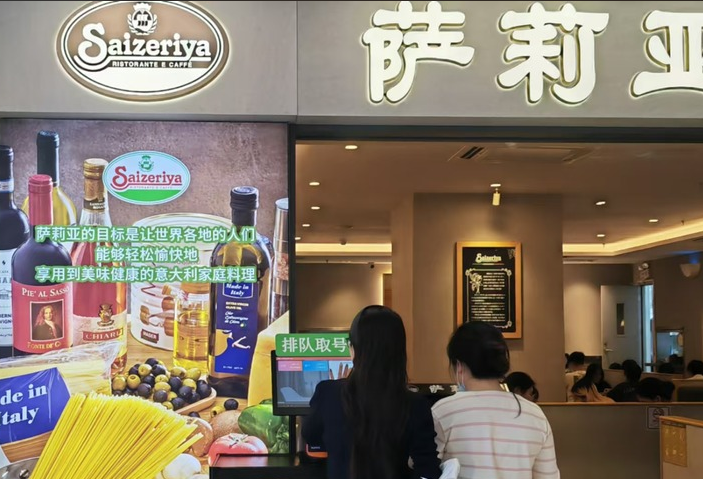GUANGZHOU, July 28 (Xinhua) -- Imagine feasting on a creamy pasta or a piping-hot pizza for just 20 yuan (about 2.8 U.S. dollars), or enjoying a bottle of wine for under 60 yuan. At Saizeriya, a Japanese chain of Italian eateries, all of these things are possible.
Since its Chinese market debut in 2003, Saizeriya has won the hearts of Chinese diners through its diverse, wallet-friendly menus. And with a typical spend of about 50 yuan per customer, it has become a popular choice for both family meals and casual gatherings among young people.
In line with China's new consumer trends, where young people seek good value and affordable, convenient meals, Saizeriya's focus on cost-effectiveness has become a key driver of its rapid growth in China.
Today, China has emerged as its most important market outside of Japan, and the company is highly confident in its prospects in China, according to Noboru Nagaoka, the company's general manager of overseas business.
Already boasting 500 outlets in China, Saizeriya now generates annual operating profits of approximately 290 million yuan -- triple those of its home market, Japan.
Nagaoka, 62, who has worked at Saizeriya for nearly four decades, remembers the early days of the company's Chinese market venture with clarity. When Saizeriya opened its first store in Shanghai in 2003, Italian cuisine was still an unfamiliar concept to most Chinese consumers.
"At that time, Chinese consumers thought Western food had to be expensive, but we wanted to prove that authentic Italian meals could also be affordable," he said.
Saizeriya opened a branch in Guangzhou in 2007, and another in Beijing in 2008. In July of this year, it established a head office in south China's Guangdong Province to manage its Chinese business and standardize its menu development.
"We value the Chinese market the most. Its profits have already surpassed those in Japan and its future growth potential is much greater," he said.
Saizeriya is steadily expanding its footprint in China at a rate of about 15 percent each year, with plans to open 70 to 80 new branches this year. "Our first store in Wuhan, central China's Hubei Province, will open next year, and we believe the city's surrounding area alone has the potential to support 100 new outlets," Nagaoka noted.
Adapting to local tastes has been a crucial strategy for Saizeriya's success in China. After decades of operations and adjustments, its menus and flavors have been modified significantly to suit Chinese palates.
Chinese and Japanese employees collaborate to use local Chinese ingredients to make unique dishes like the spicy pasta with Sichuan pickled chili peppers. They also prefer to use sauces that cater to Chinese preferences, such as black pepper sauce, in most pasta dishes.
In terms of its procurement of ingredients, the company prioritizes local supply chains, with about 90 percent of its ingredients sourced domestically in China, including all of its chicken and vegetables.
Looking ahead, Nagaoka is highly optimistic about the Chinese market. With China's vast size and the growing domestic popularity of Western food like Italian cuisine, and as Chinese consumers place increasing value on their quality of life, convenience and daily comforts, he believes Saizeriya will see even greater opportunities for growth.
He also sees that economic ties between China and Japan, especially in the fields of catering and retail, are growing stronger.
The company's investment plans in China are advancing at a record pace. Its much-anticipated factory in Guangzhou is under construction and is expected to be completed in January 2026. Designed to meet the needs of 1,000 branches, the factory will produce ingredients exclusively for Saizeriya and enhance the competitiveness of its supply chain.
The company is also considering building another factory in about five years, with an estimated investment of over 5 billion yen (about 34.2 million U.S. dollars), Nagaoka told Xinhua.




 A single purchase
A single purchase









